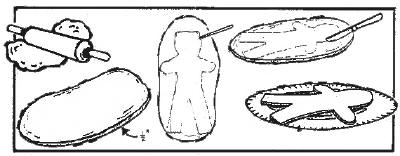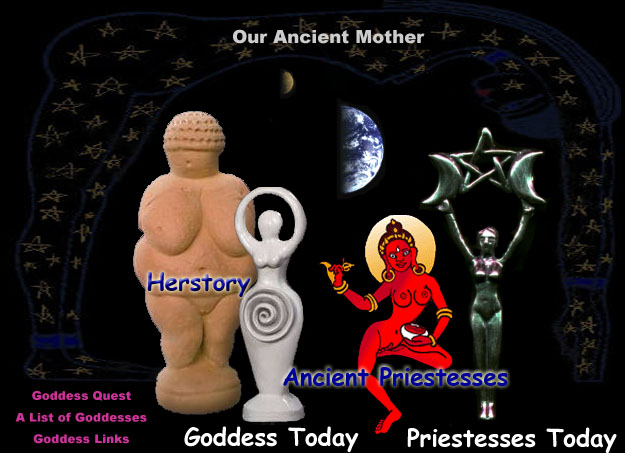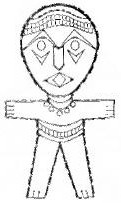A legend from the Akan people of Ghana tells about an unfortunate couple who had no children. The wife, Akua, went to their spiritual leader for advice. He gave her a beautiful doll made from clay that had a long, ringed neck and a large, decorated, oval head. Following the leader's instructions, Akua carried the doll with her always. Months later, she gave birth to a beautiful daughter.
Traditionally, men give the dolls to their wives, and the wives wear them in hopes of having beautiful children. Akan craftsmen make three styles of dolls. Those who desire a wise child will receive a doll that has a round head, called Akuabatene. Parents who want a boy child will receive a doll that has a rectangular head, called Akuabanini. Those who desire a girl will receive an Akuababere with an oval shaped head.
These dolls are either carved from wood or formed out of clay. The head of the doll makes up half of the total figure. The body is narrow with short legs and arms outstretched at the sides. The Akuaba dolls have a shape similar to the ancient Egyptian ankh, or cross of life, and may have common origins.
Materials: clay, tooth pick, rolling pin, plastic knife, diner-sized paper plate, newspaper to cover work surface, water bowl, kiln (if firing is desired)
Procedures:
- Roll the clay to form a thin slab about 1/2" (1.25 cm) thick.
- Use a toothpick to draw the doll body lightly onto the surface of the clay. Mistakes can be removed easily by rubbing the clay with water.
- Use a plastic knife to cut through the clay. Place the body shape flat onto the paper plate.
- Smooth the edges of the body with water. Geometric designs and shapes may be added with additional clay or drawn with the tooth pick.
- After the clay has fried for a week, fire it in a kiln.

Variations:
- Necklace: Tie ribbon or yarn around the neck of the doll to wear as a necklace for Mother's Day.
- Color: Color may be added with ceramic glazes or acrylic paint.
- Paper: Create the entire project from construction paper. Students may write their criteria for making their doll choice on the back of the doll.
Click here for more samples of dolls
This page last updated: 03/01/2018

